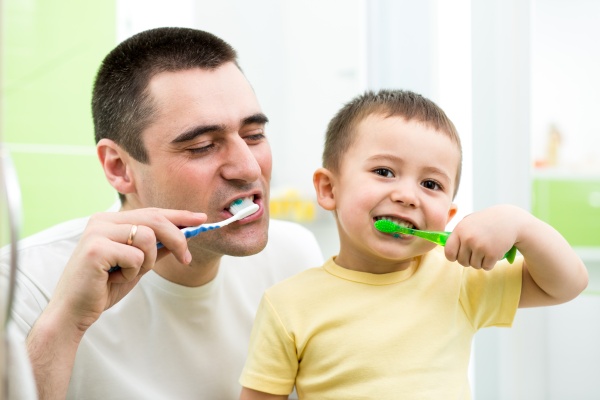What Happens at an Oral Exam at Your Dentist Office?

Has it been some time since you visited the dentist’s office for an oral exam? If so, you may be wondering what the process entails. The following will help you prepare for your visit and alleviate any anxiety you may be feeling.
The oral exam process
While all dentists differ in some ways, most will follow the same steps during an oral exam. This helps to identify any concerns and ensure the health of your teeth. Here is what happens during an oral exam with your dentist.
Medical history
Before the exam, you will be asked for a complete dental and medical history. All medications need to be disclosed as well as any chronic diseases that could affect oral health. This information will allow the dentist to focus on the areas that the chronic condition can affect. It will enable the dental team to create a better oral health care plan for you. If you are visiting a dentist you have already been to, you will likely be asked if the information you provided at the last visit is still correct or if anything has changed.
Initial exam
The dentist, or sometimes a dental hygienist, will do a brief exam to identify any problems before continuing. This is an opportunity for you to point out any pain or issues before heading into the cleaning.
X-rays
X-rays will be taken of the teeth to identify any issues and to create a baseline for future treatments. The dentist can refer to these X-rays when examining changes in the teeth and gums at following visits. X-rays help identify bone loss, abnormalities, tooth decay, gum disease, tumors and cysts.
Cleaning
If there are no immediate problems that would hinder a cleaning, the dentist or a dental hygienist will clean the teeth, gum and mouth. This prepares it for the oral exam by removing anything that can harm the teeth or obstruct the dentist’s view.
Plaque and tartar are scraped from the teeth and gum line with a scaler. Once the plaque and tartar are removed, the hygienist will polish the teeth. A gritty toothpaste and electric toothbrush are used to leave the teeth shiny and smooth. The next step is flossing followed by a fluoride treatment. The fluoride treatment is typically applied as a gel and rinsed out with water.
Final inspection
Finally, the dentist will examine the teeth for gum disease, problems with alignment, signs of grinding or other potential issues. During the final oral exam, dental work such as bridges and fillings are inspected. The dentist will check areas of the mouth and throat for signs of oral cancer.
Continue to maintain your healthy smile by following the dentist’s instructions. Brush and floss daily and avoid foods and drinks that will stain your teeth.
Are you ready for your oral exam?
It is normal to experience anxiety and discomfort when visiting the dentist for the first time or after a long gap in care. Do not let this fear stop you from taking proper care of your health. You now know what to expect and can mentally prepare yourself for the visit.
To schedule your oral exam, call our office to choose a suitable time. We are happy to explain our process to help reduce your concerns.
Are you considering an oral exam in the Hamilton area? Get more information at https://www.bridgewaterfamilydental.com.
Check out what others are saying about our services on Yelp: Read our Yelp reviews.
Related Posts
While orthodontics is a dental specialty, many general dentists offer orthodontic treatment alongside traditional dental services. This is due to the fact that the appearance and health of one's teeth are connected. A general dentist who offers orthodontic services will have the necessary training and education to address minor to moderate orthodontic treatment, allowing patients…
Children's oral health lays the foundation for a lifetime of healthy smiles. Pediatric dentists can promote proper oral and speech development by identifying and treating dental issues early on. Since these dental providers complete the training necessary to deliver tailored care for the needs of young patients, they are typically the best choice for children's…
A professional dental cleaning is non-invasive, and the entire process only takes a short amount of time on each visit. While the process for the visit may vary slightly for each patient, there are common steps involved with check-ups and professional dental cleaning visits that can be expected. The process for a dental cleaning typically involves…
Dental restoration can be used to rebuild and restore the function of damaged teeth. They can also be used to restore the aesthetics of damaged teeth. Tooth decay is one of the main reasons teeth become damaged, but other factors like trauma to the face or habits like nail biting or teeth grinding can lead…
